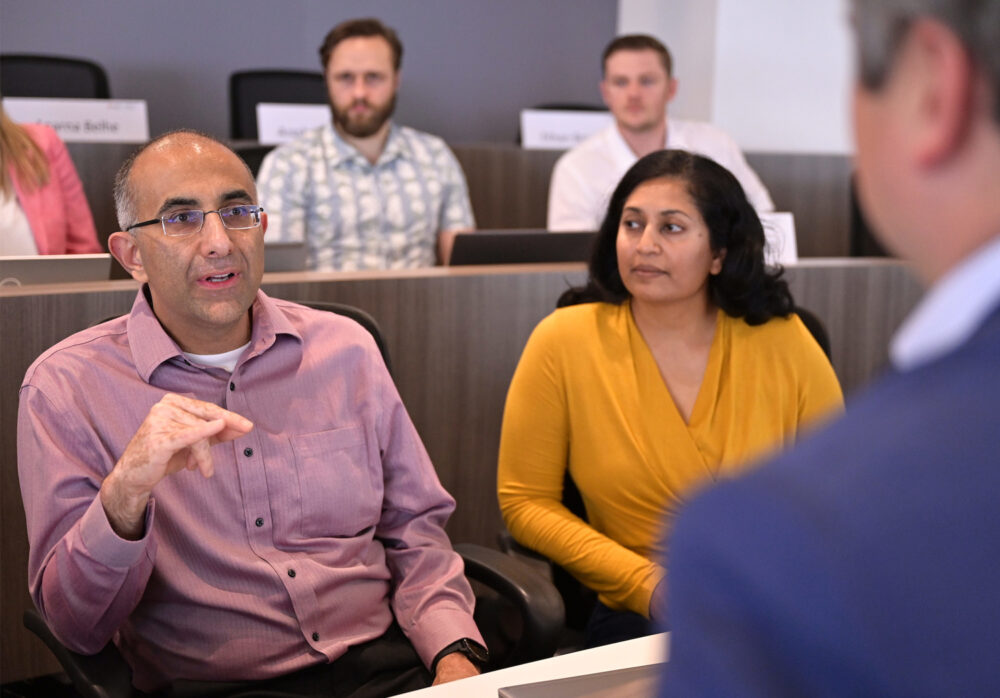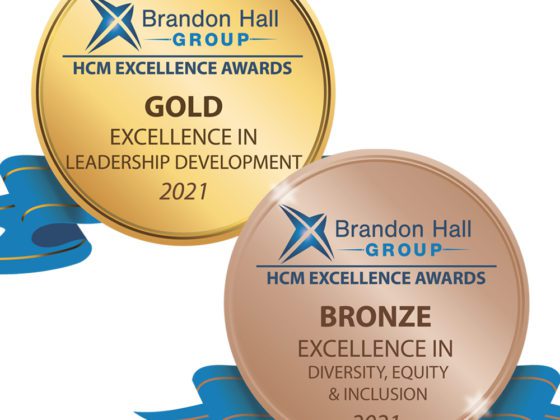Darden is known for its interactive case method approach to learning. But, what is case method and how is it relevant to organizations in trying to develop their leaders? Lisa Cannell (MBA ’17), Managing Director for Client Solutions, shares her perspective as a former HR leader and Darden MBA grad who now works with corporate and association clients who partner with Darden on leadership development.
In my time as an HR leader, I have helped facilitate many change initiatives and organizational development interventions. Additionally, I have been responsible for developing individual leaders and bringing together top-performing teams. One thing I’ve discovered is the power of stories, where coworkers share examples and experiences to help learn. Most leaders do not have enough examples in their own experience on which to draw – and need to have exposure to peers and other avenues to learn from others’ mistakes and successes. Darden’s case method approach uses case studies to provide those stories, and prompt participants in the room to share their own stories and raise curiosity about options and outcomes. Typically, there is no “right” answer.
HR also has the visibility to see all roles and capabilities needed in the organization and how they inter-relate to meet the goals (or not!). Darden’s MBA program helped me realize even more how this is a unique view that not all leaders have. One of the biggest opportunities in succession planning is to help functional leaders to “put on the enterprise hat”. This is because they may not have had the opportunity to see or work cross-functionally in their career and are naturally first and foremost concerned about the goals of their function. Oftentimes, I have played the “chief communicator,” for example, to help the operations team understand why the finance team needs “x,” why the sales and marketing team said “y” and why the executive team demands “z.” Case study discussions bring that to life in a safe & experiential environment in the classroom laboratory.
There is mounting research about the importance of critical thinking skills for jobs in the future. For years I have seen this play out – where you really see it is lacking during times such as major corporate decision points, key people issues, unplanned crisis, etc. I have experimented with how to assess this and help leaders to develop critical thinking skills, since it comes with practice. Darden teaches decision-making skills and decision-bias, both of which directly help critical thinking; however, all case study discussion, regardless of the case topic, is practice in critical thinking. Participants are put in a situation where they must think on their feet, ask questions and share their recommendations. Case study discussions build the critical thinking muscle.
Benefits of Case Study Discussion
- Multiple aspects of business intertwined – demonstrates enterprise perspective.
- Non-intrusive way to open up discussion on sensitive issues – focus is on another organization and what they did, should do, etc.; however, the mirror is held up eventually, usually by a participant saying “this is like us.”
- Broader exposure to examples outside of company and/or industry – helps innovative and creative thinking.
- Focused time and opportunity to share stories or real-life experiences where managers have learned lessons with their peers.
- Cross-functional contribution to discussion from people across the organization – those who may be expert can help others and observe how their function is perceived.
- OD intervention – the spotlight sometimes reveals an organizational issue that inspires participants to open up and have productive dialogue about what they are observing in their own organization and how they can collaborate on new ideas for how to approach issues or address a needed change.
- No right answer – no prescriptive training on what to do – only options and decision-making based on critical thinking – reflects real life where there is usually more than one answer.
- Safe environment for dissent, open and robust dialogue, and experimentation – much needed in many organizations.
- Fun environment where curiosity, laughter and learning go hand-in-hand.
- Team engagement to question assumptions, explore alternative viewpoints, and challenge existing processes.
- Celebration of the “why” and the “what if” questions that spark innovation and drive positive change.
- Critical thinking as a superpower, enabling us to analyze information objectively, identify biases, and challenge the status quo. It’s the art of asking thought-provoking questions – Why did that decision backfire? What assumptions were made? How could the outcome have been different? – and embracing a mindset of curiosity.
I welcome the opportunity to host you and your organization to observe a class and participate in a case study discussion. It is something that you need to experience to really appreciate!
Connect with Lisa to discuss your organization’s development needs or learn more about our Solutions for Organizations.




